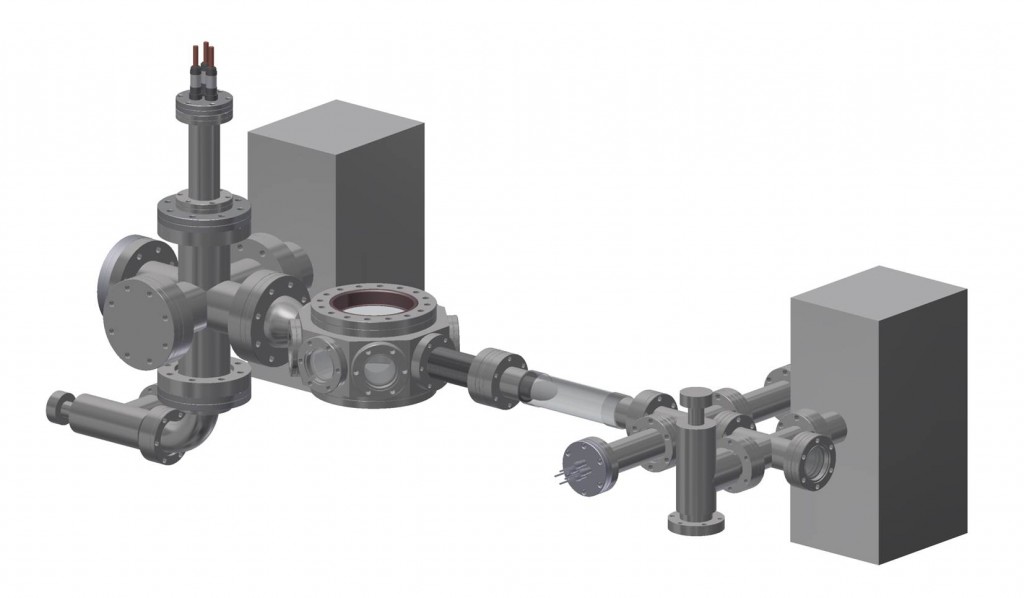Rotation Sensing with Ultracold Atoms
Superconducting quantum interference devices (SQUIDs) are well-known for their ability to measure extremely small magnetic fields. An analogous device can be constructed using superfluid 3He, producing two-path quantum interference that is sensitive to rotation of the interferometer. Recently, quantum interference has been observed using a dilute gas Bose-Einstein Condensate, allowing for direct measurement of the critical current across Josephson junctions. We propose to combine the techniques outlined above in a cold atoms experiment, with the goal of an even higher sensitivity to rotation.
The aim of the experiment is to create and study a Rubidium Bose-Einstein Condensate (BEC) in a ring trap. The superfluidity of the BEC leads to quantised jumps in its angular momentum, such that a high sensitivity to rotation can be achieved. The first step to achieve this goal is to generate a BEC in a new Ultra High Vacuum double-chamber apparatus, which has recently been constructed. In the first, higher pressure, chamber a 2D-MOT and push beam create a high-flux atom source, which traverses a differential pumping section before loading a 3D-MOT in the second chamber, where evaporative cooling and the science experiments will also take place.
The second step is to produce a ring trap geometry with a Spatial Light Modulator overlapped with a light sheet, and to trap the atoms in this optical trap. Initial tests of the rotation sensor will be performed by stirring the BEC within the ring.
Current Team: D Bowman, P Ireland, M Anderson, S Town, G D Bruce, D Cassettari
Collaborators: A Arnold (Strathclyde)

